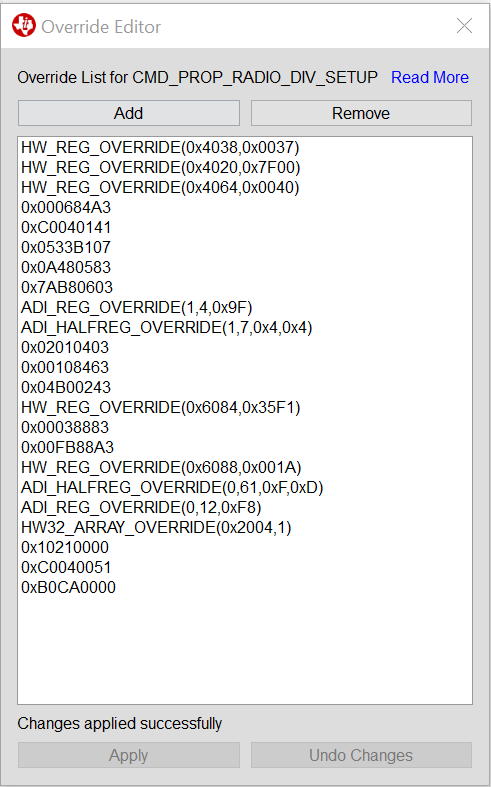Hello,
I am relatively new to RF but have successfully got two CC1310s communicating using two CC1310DK kits and SmartRF studio 7. Using the same settings the example projects also worked as expected for me (rfPacketRx_CC1310DK_7XD_TI_CC1310F128 and the corresponding TX version).
Now however I've been handed a new requirement to make these devices work with a legacy system. I have two examples of the legacy devices but the actual RF chip used on it seems to be a closely guarded secret (the part is covered in epoxy and the client will not, or cannot, tell me). I'm told these legacy devices work as follows:
- Centre frequency: 868.9MHz
- Modulation: FSK
- Frequency deviation: 45kHz
- Bit rate: 20kbps
- TX bandwidth: 400kHz
- TX Power: 12 dBm
- RX bandwidth: 100kHz
- 4 byte preamble: 0x55 0x55 0x55 0x55
- 4 byte sync: 0x1A 0x2B 0x3C 0x4D
- Whitening enabled on one device, disabled on the other
However, when experimenting with different settings in SmartRF Studio I am unable to get the devices to communicate with the CC1310 (send or receive, with or without whitening). In continuous RX mode I can however see that the devices are transmitting when I expect them to.
I think I'm setting the device to use FSK correctly (CMD_PROP_RADIO_DIV_SETUP->modulation->modType set to 0), and the centre frequency and frequency deviation seems straight forward.
I don't fully understand how the bit rate matches up with the symbol rate in SmartRF Studio (or it's importance) so can anybody clarify?
I see how to set the sync bytes (I'm not sure of the endianness, but I've tried all options), but how do I set the preamble (is it possible to set)? I see there's a field for it in the "Packet TX" tab, but it is greyed out and not editable for me.
I hope I'm missing a small detail, but due to my lack of RF experience, and my inexperience with the CC1310, I don't know what or where to look next. I'm hoping somebody here can give me some hints on how to set up SmartRF studio to match these settings, and/or advise on a strategy to determine the required settings.
Thanks,
K




